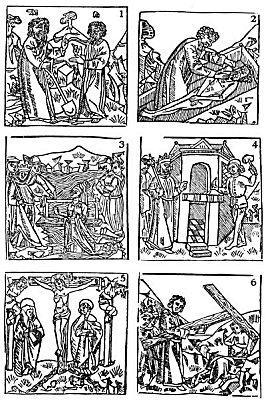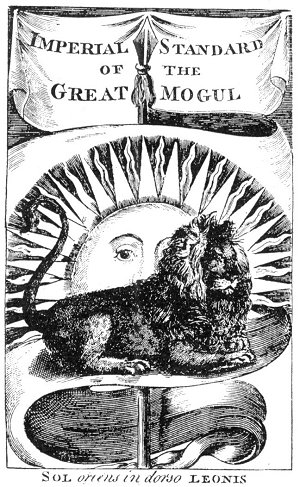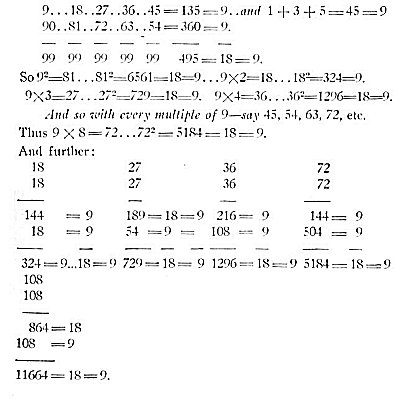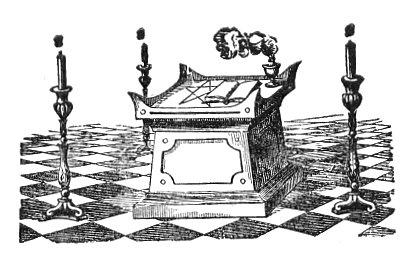But we ought, perhaps, to explain the ancient use of allegory and symbology. The truth in the former was left to be deduced; the symbol expressed some abstract quality of the Deity, which the laity could easily apprehend. Its higher sense terminated there; and it was employed by the multitude thenceforth as an image to be employed in idolatrous rites. But the allegory was reserved for the inner sanctuary, when only the elect were admitted. Hence the rejoinder of Jesus when his disciples interrogated him because he spoke to the multitude in parables. “To you,” said he, “it is given to know the mysteries of the Kingdom of Heaven, but to them it is not given. For whosoever hath, to him shall be given, and he shall have more abundance; but whosoever hath not, from him shall be taken away even that he hath.” In the minor Mysteries a sow was washed to typify the purification of the neophyte; as her return to the mire indicated the superficial nature of the work that had been accomplished.
“The Mythus is the undisclosed thought of the soul. The characteristic trait of the myth is to convert reflection into history (a historical form). As in the epos, so in the myth, the historical element predominates. Facts (external events) often constitute the basis of the myth, and with these, religious ideas are interwoven.”
The whole allegory of Job is an open book to him who understands the picture-language of Egypt as it is recorded in the Book of the Dead. In the Scene of Judgment, Osiris is represented sitting on his throne,
Page 494
holding in one hand the symbol of life, “the hook of attraction,” and in the other the mystic Bacchic fan. Before him are the sons of God, the forty-two assessors of the dead. An altar is immediately before the throne, covered with gifts and surmounted with the sacred lotus-flower, upon which stand four spirits. By the entrance stands the soul about to be judged, whom Thmei, the genius of Truth, is welcoming to this conclusion of the probation. Thoth holding a reed, makes a record of the proceedings in the Book of Life. Horus and Anubis, standing by the scales, inspect the weight which determines whether the heart of the deceased balances the symbol of truth, or the latter preponderates. On pedestal sits a bitch — the symbol of the Accuser.
Initiation into the Mysteries, as every intelligent person knows, was dramatic representation of scenes in the underworld. Such was the allegory of Job.
Several critics have attributed the authorship of this book to Moses. But it is older than the Pentateuch. Jehovah is not mentioned in the poem itself; and if the name occurs in the prologue, the fact must be attributed to either an error of the translators, or the premeditation exacted by the later necessity to transform polytheism into a monotheistic religion. The plan adopted was the very simple one of attributing the many names of the Elohim (gods) to a single god. So in one of the oldest Hebrew texts of Job (in chapter xii. 9) there stands the name of Jehovah, whereas all other manuscripts have “Adonai.” But in the original poem Jehovah is absent. In place of this name we find Al, Aleim, Ale, Shaddai, Adonai, etc. Therefore, we must conclude that either the prologue and epilogue were added at a later period, which is inadmissible for many reasons, or that it has been tampered with like the rest of the manuscripts. Then, we find in this archaic poem no mention whatever of the Sabbatical Institution; but a great many references to the sacred number seven, of which we will speak further, and a direct discussion upon Sabeanism, the worship of the heavenly bodies prevailing in those days in Arabia. Satan is called in it a “Son of God,” one of the council which presents itself before God, and he leads him into tempting Job’s fidelity. In this poem, clearer and plainer than anywhere else, do we find the meaning of the appellation, Satan. It is a term for the office or character of public accuser. Satan is the Typhon of the Egyptians, barking his accusations in Amenthi; an office quite as respectable as that of the public prosecutor, in our own age; and if, through the ignorance of the first Christians, he became later identical with the Devil, it is through no connivance of his own.

Moe is the founder of GnosticWarrior.com. He is a father, husband, author, martial arts black belt, and an expert in Gnosticism, the occult, and esotericism.





